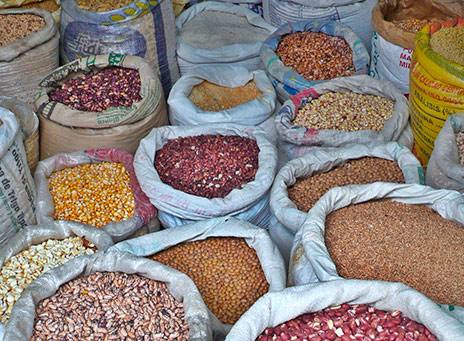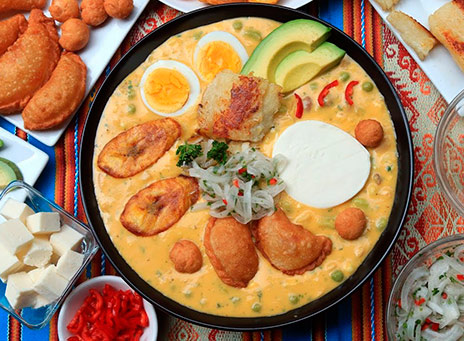Fanesca is the plate on every family’s holiday menu on Easter Sunday. You can also find it served as a special seasonal dish in restaurants and gastronomy fairs. Fanesca is hearty soup made with a base of young grains and dried fish. For some, it may be an acquired taste, but for most Ecuadorians, it is an essential holiday tradition.
The history of Fanesca, like most cultural practices here in Ecuador, illustrates the mixture of pre-Hispanic and Catholic tradition. Quito’s pre-conquest inhabitants, celebrated the Mushuc Nina, the day of the New Fire, as a way of acknowledging the Vernal Equinox in March.

In Kichwa, this dish, made from young grains cooked with chili and herbs, was called “uchucuta.” It included peas, fava beans, mellocos, (a kind of tiny Andean potato), choclo (a starchy corn), beans, and squash. All of the food items that were harvested in this season, from February until the celebration of Pawcar Raymi. Some believe that the uchucuta dish would have traditionally been accompanied by a roasted wild cuy.
 Suring the colonial era, many indigenous practices and symbols were used by the Spanish, and combined with Catholic beliefs and practices in order to form a single, syncretic religion and culture. Uchucuta was not spared this influence: It was integrated into the celebration of Holy Week, and the suffering, death, and resurrection of Jesus was fused with the pre-Hispanic harvest celebrations. Later the ingredients of fish and cheese were added.
Suring the colonial era, many indigenous practices and symbols were used by the Spanish, and combined with Catholic beliefs and practices in order to form a single, syncretic religion and culture. Uchucuta was not spared this influence: It was integrated into the celebration of Holy Week, and the suffering, death, and resurrection of Jesus was fused with the pre-Hispanic harvest celebrations. Later the ingredients of fish and cheese were added.
The dish was then called fanesca, and its preparation was connected to Christian symbolism. The twelve grains were now said to represent the twelve disciples and the twelve tribes of Israel, drawing fanesca into a millennial narrative about the fulfillment of biblical prophecies. The dried, salted cod (bacalao) represents Jesus himself. Some say that each of the grains symbolizes a specific figure in the Catholic faith.
The first printed cookbook in Quito, which has been traced back to the possession of Pablo Sanz in 1882, included, of course, a recipe for fanesca, one that was becoming standard all over the country:

“Choose tender beans, fava beans, lupine beans, corn, and green peas: boil them, along with rice, cabbage, and squash, chopped; add everything to a large pot prepared with onion fried in butter, garlic, cumin, ground peanuts, and a dash of sugar; add the curds and milk, and after boiling it with pieces of fish and shrimp, the dish is served with pieces of fried dough in different shapes, and very small slices of fried plantain, sliced of boiled egg, chopped parsley, and ground pepper on top.”
(Carlos Gallardo de la Fuente, Fanescas, un recorrido ancestral y contemporáneo por una tradición festiva del Ecuador, UDLA, 2012. Julio Pazos, El sabor de la memoria, historia de la cocina quiteña, Fonsal, 2008.)
There are some modern recipes that come without the pieces of fried cod, which you may find that you prefer! And even though fanesca is quite filling all on its own, try to save room for dessert. Fanesca is also served with another Ecuadorian classic: Higos con queso. These preserved figs in sweet syrup are very tasty when combined with a slice of savoury cheese.
You can try fanesca for yourself in great restaurants throughout the city. But you should know that if you ask a Quiteño for suggestions of the best fanesca around, they will most likely direct you to their mother or grandmother’s kitchen!
